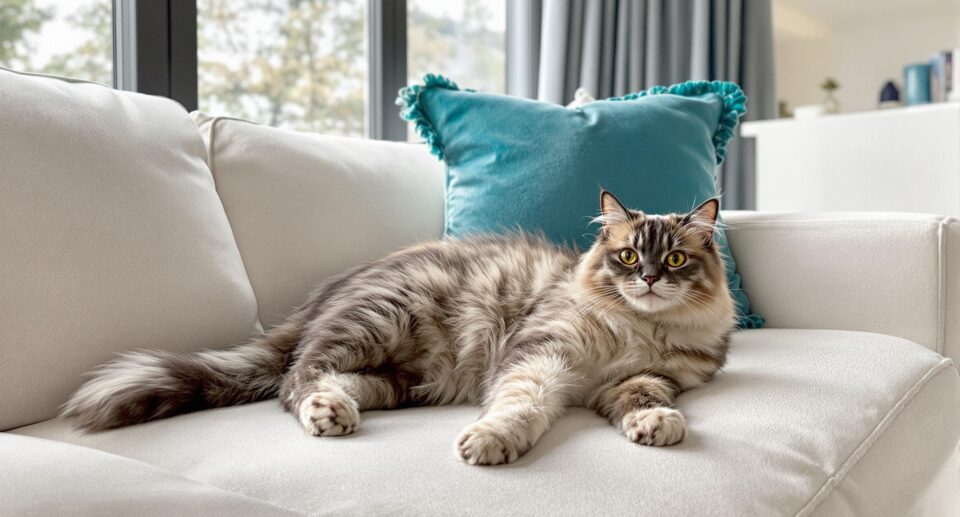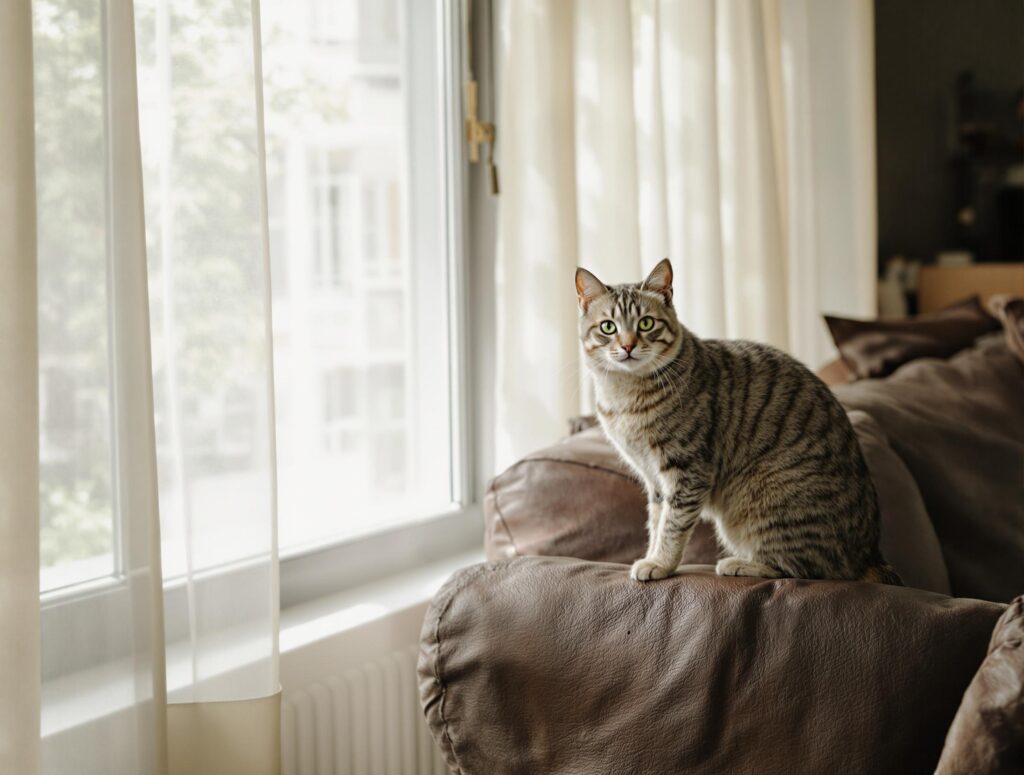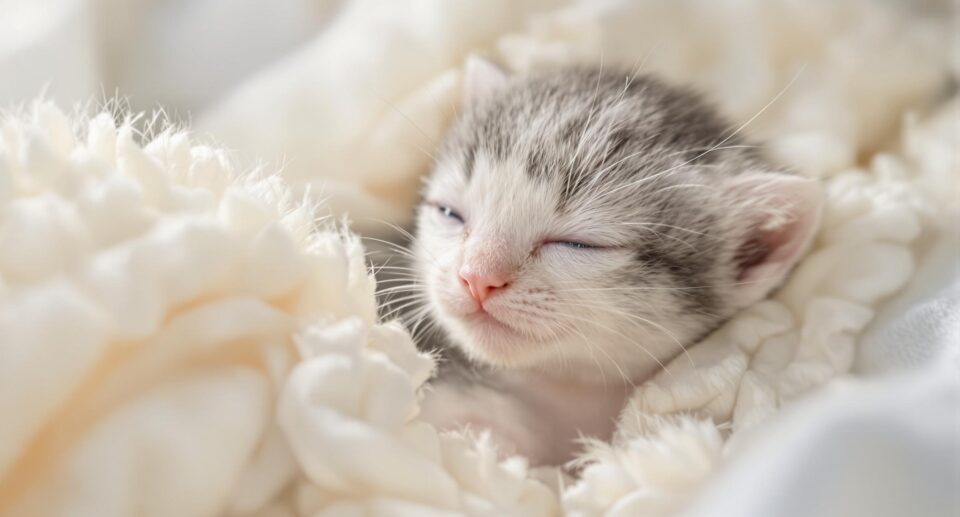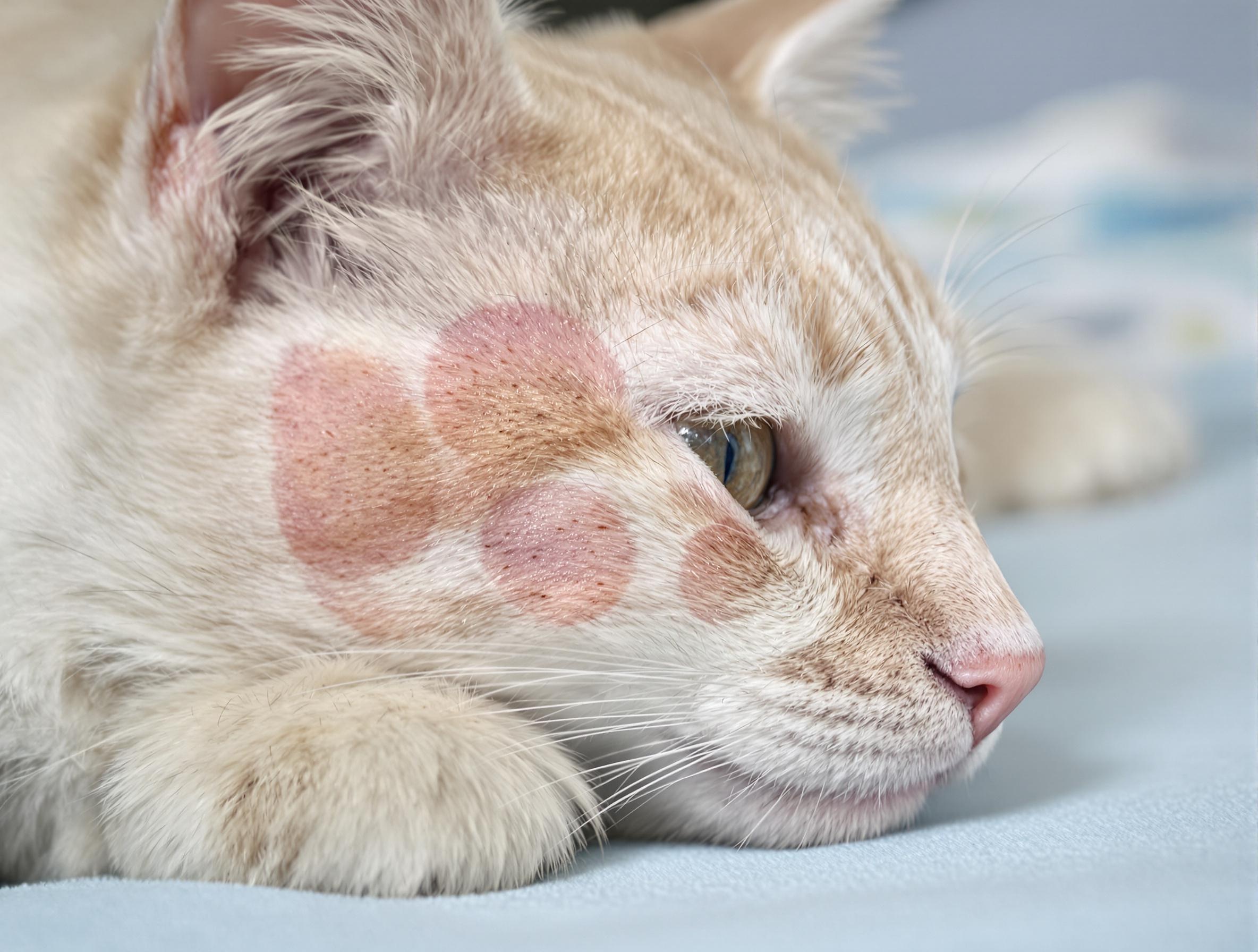Can Indoor Cats Get Fleas? What Every Pet Parent Should Know

Key takeaways:
- Indoor cats can still get fleas due to humans going in and out of the house, other pets or pests bringing fleas inside, open windows, and other factors.
- Regular grooming and inspection, coupled with a proactive flea prevention plan, can help you maintain a flea-free home.
- Prompt and consistent use of recommended flea prevention treatments can prevent infestation and protect your cat’s comfort and health.
Did you know fleas can jump up to 7 inches high—about the height of an average smartphone? These parasites easily hitchhike into homes on clothing, shoes, or visiting pets, making indoor cats vulnerable to flea infestations. While indoor cats face lower risks than outdoor cats, their confined environment can actually intensify an infestation, as a single flea can lay up to 50 eggs daily in your carpets and furniture.
Understanding your indoor cat’s risk factors is the first step toward prevention. Many pet parents discover the difference between cat and dog fleas only after spotting signs of infestation. As your partner in pet health, PetHealthMD provides comprehensive resources for creating and maintaining a flea-free environment for your indoor cat.
If you’re dealing with an active flea infestation, we recommend visiting your veterinary clinic right away to address the problem.
How Do Indoor Cats Get Fleas?
Even if your cat never sets a paw outside, fleas can still find their way in. Here are some of the most common ways indoor cats end up with fleas:
A new home, a hidden problem: If you’ve recently moved, flea eggs from previous pets could be lurking in the carpet, furniture, or even cracks in the flooring. These eggs can stay dormant for weeks, only to hatch once they sense a new host—your cat.
Carried inside by humans: Fleas are experts at catching a ride on clothing, shoes, and even grocery bags. Visiting a home with pets or areas where fleas are common can lead to accidental hitchhikers.
Other pets in the home: Have a dog or another pet that goes outside? They could bring fleas inside, putting your indoor cat at risk. Even pets on prevention can experience brief lapses that allow infestations to begin.
Wildlife visitors: Squirrels, birds, or mice near your home can introduce fleas into your living space. Fleas thrive in shaded outdoor areas like patios, decks, and garages.
Professional pet care encounters: Visits to the vet or groomer are essential for your cat’s health, but can expose them to fleas. Even with strict sanitation, fleas can transfer between animals.
Drafts and gaps in windows or doors: Tiny cracks in doors, windows, and vents can let fleas crawl indoors unnoticed.
Common Flea Concerns for Cat Parents
Cats can’t tell you when something is wrong, so recognizing early signs of fleas is crucial:
- Early warning signs like excessive grooming or scratching may indicate fleas. Regular coat checks are an easy way to catch infestations early.
- Fleas reproduce quickly—up to 50 eggs a day—so prompt treatment is key.
- Flea bites cause irritation and discomfort. Grooming and inspection help detect early problems.
- Some cats develop flea allergies, causing excessive scratching and hair loss. Your vet can recommend treatments for relief.
- Most fleas live in your home rather than on your cat, so vacuuming and washing bedding regularly is vital.
- Fleas can transmit tapeworms and other parasites, making flea prevention for cats an essential part of overall pet health.
Preventing Fleas in Indoor Cats
Prevention is always easier than treatment. These steps will help you protect your cat and your home:
Regular grooming: Use a flea comb to check around the neck, belly, and tail. Grooming also helps keep your cat’s coat healthy.
Use a flea treatment: Indoor cats still need vet-approved flea prevention, such as topical applications, oral medications, or flea collars. Your vet can recommend the best option.
House cleaning: Vacuum carpets and furniture frequently to remove flea eggs and larvae. Wash pet bedding in hot water to eliminate hiding spots.
Dehumidifying your house: Fleas thrive in humidity. Keep indoor humidity below 50% to make your home less welcoming to pests.
Treating your other pets: Dogs and other animals that go outdoors can bring fleas inside. Keeping all pets on a prevention plan creates a strong line of defense.
If you’re planning to start any new treatment for your cats, consult your veterinarian first to ensure it’s safe and effective.

Frequently Asked Questions About Fleas and Indoor Cats
Q: Can indoor cats really get fleas?
A: Yes! Fleas can enter your home on clothing, shoes, or other pets. Even if your cat never steps outside, they are still at risk.
Q: How can I tell if my cat has fleas?
A: Look for scratching, tiny black specks (flea dirt) in their fur, sudden bursts of activity, or hair loss from overgrooming.
Q: What is the best flea prevention for indoor cats?
A: Vet-approved flea prevention products such as topical treatments, oral medications, or flea collars. Ask your vet which is best for your cat.
Q: How often should I check my cat for fleas?
A: Use a flea comb and check weekly, especially if you have other pets or frequent visitors.
Q: How do I get rid of fleas if my indoor cat gets them?
A: Start with a vet-recommended flea treatment, vacuum your home thoroughly, wash bedding, and use pet-safe flea sprays as needed.
Q: Should I treat my home even if I only see a few fleas?
A: Yes. A single flea can lay up to 50 eggs per day, so early action is critical.
Q: Do fleas pose health risks to my cat?
A: Yes. Fleas can cause allergic reactions, skin infections, and can transmit tapeworms. Consistent flea prevention is vital.
The Bottom Line: Flea Prevention Is Key
Even though indoor cats face lower risks, they’re not immune to fleas. The best protection is proactive care. Regular flea prevention, consistent cleaning, and immediate treatment at the first sign of trouble will keep your cat comfortable, happy, and healthy.
Explore trusted cat flea treatments at 1800PetMeds to keep your feline friend flea-free all year long.





